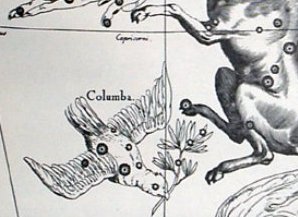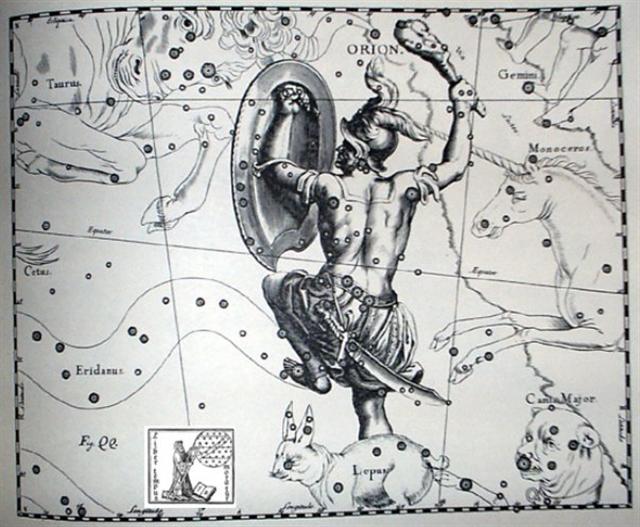The 4th (or
18th) glyph line is not
beginning with July 1 but
with Gregorian day 177 + 1 =
June 27 and after the heliacal
rising of Canopus:
|
Ardra
9 |
10 |
11 (72) |
12 |
|
Albatain 13 (40) |
Al Tuwaibe' 1 |
2 |
3 |
|
June 25 |
26 (177) |
27 |
28 |
 |
 |
 |
 |
| Cb3-21 |
Cb3-22 |
Cb4-1 (464) |
Cb4-2 |
|
manu rere i te
taketake |
te
henua - mau i te
taketake |
manu rere |
kiore - henua |
|
Canopus (95.6),
ψ1 Aurigae (95.9) |
no stars listed |
ν Puppis (99.2),
ψ3 Aurigae (99.4),
ψ2 Aurigae (99.5) |
|
Purva Ashadha 4 |
5 |
6 (256) |
7 |
|
Dercember 26 (360) |
27 |
28 |
29 |
|
Qalb al Akraab 2 |
3 (225) |
4 |
5 |
|
ν Pavonis (280.4) |
κ Cor. Austr.
(280.9), θ Cor.
Austr. (281.0) |
Vega (281.8) |
ζ Pavonis (283.4) |
|
Ardra
13 |
14 |
15 |
16 |
17 (78) |
|
Al Tuwaibe' 4 |
5 |
6 (46) |
7 |
8 |
|
June 29 |
30 |
July 1 |
2 |
3 (184) |
 |
 |
 |
 |
 |
| Cb4-3 |
Cb4-4 |
Cb4-5 (468) |
Cb4-6 |
Cb4-7 |
|
te
hakaua |
te
henua |
te
Rei |
te
ua |
kiore - henua |
|
ψ4 Aurigae (100.5) |
Mebsuta (100.7),
Sirius (101.2),
ψ5 Aurigae (101.4) |
ν Gemini (101.6), ψ6
Aurigae (101.7), τ
Puppis (102.2), ψ7
Aurigae (102.4) |
ψ8 Aurigae (103.2) |
Alhena (103.8),
ψ9
Aurigae (103.9) |
|
P. Ashadha 8 |
9 |
10 (260) |
11 |
U. Ashadha
1 |
|
Dercember
30 |
31 |
January 1 |
2 |
3 (368) |
|
Qalb al Akraab
6 |
7 |
8 (230) |
9 |
Shaula 1 |
|
λ Cor. Austr.
(283.6), Double
Double (283.7), ζ
Lyrae (283.8), φ
Sagittarii (284.0) |
μ Cor. Austr.
(284.6), η Cor.
Austr., θ Pavonis
(284.8), Sheliak, ν
Lyrae (285.1) |
λ Pavonis (285.7),
Ain al Rami (286.2),
δ Lyrae
(286.3), κ Pavonis
(286.5) |
Alya (286.6), ξ
Sagittarii (287.1),
ω Pavonis (287.3),
Sulaphat, ε Cor.
Austr. (287.4) |
λ Lyrae (287.7),
Ascella (287.9),
Nunki (288.4),
ζ Cor. Austr.
(288.5) |
The ruling stars of Gemini
may have been Alhena (the
'Mark', γ), which
rose in July 3 (184),
and Pollux (the
immortal of the twins, β)
in July 15 (196).

At the same
time a knowing observer in
the night could have seen
how the stars at the end of
'Land', Ascella and Nunki (ζ
respectively σ Sagittarii)
took over at the
beginning of the nakshatra Uttara
Ashadha.
But the long Ardra
nakshatra, where Sun was in
the daytime, continued:
|
Ardra
18 |
19 (80) |
20 |
21 |
22 |
|
Al Tuwaibe' 9 |
10 |
11 |
12 (52) |
13 |
|
July 4 (185) |
5 |
6 |
7 |
8 |
 |
 |
 |
 |
 |
|
Cb4-8 |
Cb4-9 |
Cb4-10 (473) |
Cb4-11 |
Cb4-12 |
|
manu
mau
kai |
rere
ki
te kai
|
ka kake
ki te kai |
hakavari
te gao o te
manu |
kiore
henua |
|
Adara
(104.8), ω
Gemini
(105.4) |
Alzirr
(105.7),
Muliphein
(105.8) |
7h (106.5) |
no stars
listed |
|
Wezen
(107.1) |
|
U. Ashadha 2 |
3 |
4
(265) |
5 |
6 |
|
January 4 |
5 |
6 |
7 (372) |
8 |
|
Shaula 2 |
3 |
4 |
5 (236) |
6 |
|
19h (289.2) |
δ Cor.
Austr.
(289.8),
Al Baldah,
Alphekka
Meridiana
(290.1), β
Cor. Austr.
(290.2)
|
Aladfar
(291.1),
Nodus II
(291.5) |
ψ Sagittarii
(291.6), θ
Lyrae
(291.8) |
ρ
Sagittarii
(292.6), υ
Sagittarii
(292.7),
Arkab Prior
(293.0),
Arkab
Posterior,
Alrami
(293.2) |
|
Manubrium
(288.8),
γ
Cor. Austr
(289.3), τ
Sagittarii
(289.4), ι
Lyrae
(289.5) |
Probably Metoro here
alluded to kahi
(the 'Tuna') with
his kai:
...
Rangitokona,
prop up the heaven!
// Rangitokona,
prop up the morning!
// The pillar stands
in the empty space.
The thought [memea]
stands in the
earth-world - //
Thought stands also
in the sky.
The kahi
stands in the
earth-world - //
Kahi stands also
in the sky.
The pillar stands,
the pillar - // It
ever stands, the
pillar of the sky.
Then for the first
time was there light
between the Sky and
the Earth; the world
existed ...
There should be a
'pillar' (ana)
pushing the sky up
where
light ('Land') is
returning. Wezen (the
'Weight', δ Canis
Majoris) had
possibly the
position of the 'Kahi'.
Probably the measure 107 days
after March 21 was a
significant date. A
lead weight hanging
down (like a tuna
with its head down)
could be
contrasted with
Nodus II (δ
Draconis)
high up in the night
sky.

Anciently (taketake)
the Dove of Noah
(Phakt,
α Columbae) was
returning
with a Sign of 'the
year in leaf' in her
beak, which meant Wezen at
the back of Canis
Majoris was not far
in front:

|
Mrigashīrsha
3 |
4 (60) |
5 |
|
Albatain
2 |
3 (30) |
4 |
|
June 14
(165) |
15 (531) |
16 |
 |
 |
 |
|
Cb3-10 |
Cb3-11
(452) |
Cb3-12 |
|
te
taketake |
henua |
kiore
- henua |
|
Alnitak,
Phakt
(Phaet),
(84.7) |
γ
Leporis
(85.9),
μ
Columbae
(86.1),
Saiph
(86.5) |
ζ
Leporis
(86.6) |
|
Mula 16 |
17 (244) |
18 |
|
December
15 |
16 (350) |
17 |
|
Akleel 4 |
5 (214) |
6 |
|
Kew Ho
(268.6),
η
Pavonis
(268.7),
Apollyon
(268.9),
Muliphen
(269.0),
Basanismus
(269.5) |
Pherkard
(269.9),
M7
(270.5) |
Rukbalgethi
Genubi
(271.1),
ξ
Herculis
(271.5) |
In contrast to
the Dove of
Light
there was at the
other end of the
year the
frigthening
Dark Apollyon:

The composition
can be compared
with how
Hevelius
illustrates the
battle between
Spring Bull and
Orion:

|
















